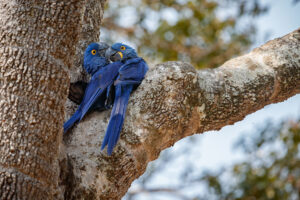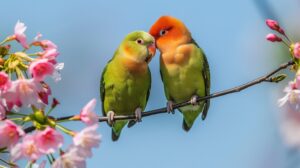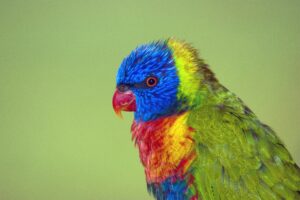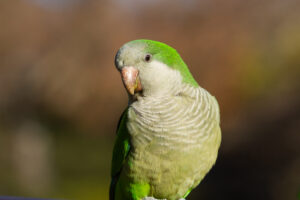Introduction
The turquoise green cheek conure has captured the hearts of bird enthusiasts across the United States with its striking appearance and charismatic personality. As a popular mutation of the standard green cheek conure, the turquoise green cheek conure features stunning blue-green plumage that sets it apart from other varieties. While these small parrots make wonderful companions, there are several hidden dangers that every owner should be aware of to ensure their feathered friend lives a long, healthy life.
Owning a turquoise green cheek conure comes with tremendous responsibility. These intelligent birds require specialized care, proper diet, and an understanding of their unique behavioral patterns. Unfortunately, many new owners are unprepared for the challenges that can arise when caring for these exotic pets. This comprehensive guide will reveal five critical dangers that every turquoise green cheek conure owner should know about, helping you provide the best possible care for your beloved companion.
Whether you’re a first-time owner or an experienced bird enthusiast, understanding these hidden dangers will help you create a safer environment for your turquoise green cheek conure. Let’s explore these potential hazards in detail and learn how to mitigate the risks they pose to your pet’s health and wellbeing.

Danger #1: Household Toxins and Hidden Hazards
The turquoise green cheek conure is naturally curious and loves to explore its environment. Unfortunately, many common household items can pose serious threats to these birds. One of the most significant dangers is exposure to toxic substances that may not seem harmful to humans but can be deadly to your turquoise conure.
Common Household Toxins
Non-stick cookware containing Teflon can release fumes when overheated that are extremely toxic to birds, including the turquoise green cheek conure. These fumes can cause respiratory distress and even death in a matter of minutes. Other common household toxins include:
- Scented candles and air fresheners
- Cleaning products and disinfectants
- Pesticides and insecticides
- Tobacco smoke
- Lead-based paint
- Certain houseplants like philodendron and lily
Many turquoise green cheek conure owners are unaware that seemingly innocent items like scented candles can release chemicals that damage their bird’s sensitive respiratory system. These conures have highly efficient respiratory systems that make them particularly vulnerable to airborne toxins.
Hidden Physical Hazards
Beyond chemical hazards, there are physical dangers lurking in your home that could harm your turquoise green cheek conure:
- Ceiling fans and open windows
- Hot stovetops and open flames
- Open toilet bowls (risk of drowning)
- Small objects that could be swallowed
- Electrical cords that could be chewed
- Other household pets that might view your conure as prey
The turquoise green cheek conure’s curious and playful personality makes it prone to exploring potentially dangerous situations. Their high intelligence means they can often figure out how to escape their cage if it’s not properly secured, exposing them to these hazards when unsupervised.
Creating a Safe Environment
To protect your turquoise green cheek conure from household dangers:
- Create a bird-safe zone free from toxic elements and physical hazards
- Use bird-safe cleaning products throughout your home
- Eliminate the use of non-stick cookware or ensure proper ventilation
- Keep doors and windows closed when your turquoise conure is out of its cage
- Remove or secure toxic houseplants
- Supervise your bird during out-of-cage time
Understanding these risks is essential for providing a safe environment for your turquoise green cheek conure. Remember that prevention is always better than treatment when it comes to these avoidable hazards.
Danger #2: Nutritional Deficiencies and Diet-Related Issues
The turquoise green cheek conure requires a specialized diet to maintain optimal health. Many owners make the mistake of feeding their birds an improper diet, which can lead to serious health problems over time. Understanding your turquoise green cheek conure’s nutritional needs is crucial for their long-term wellbeing.
Common Diet Mistakes
One of the biggest misconceptions about the turquoise green cheek conure diet is that a seed-only diet provides adequate nutrition. In reality, seeds should only make up a small portion of your turquoise conure’s diet. Seeds are high in fat and lack many essential nutrients, leading to:
- Vitamin A deficiency (common in seed-only diets)
- Calcium deficiency leading to bone issues
- Obesity and related health problems
- Fatty liver disease
- Weakened immune system
Many turquoise green cheek conure owners fall into the trap of providing what their bird eagerly eats rather than what it nutritionally needs. These birds often develop preferences for unhealthy foods if allowed to self-select their diet.
Proper Nutritional Balance
A balanced diet for your turquoise green cheek conure should include:
- High-quality pellet formulation (50-60% of diet)
- Fresh vegetables and fruits (30-40% of diet)
- Limited amount of seeds and nuts (5-10% of diet)
- Occasional healthy treats for training and bonding
The turquoise green cheek conure thrives on variety in their diet. Rotating different vegetables and fruits helps ensure they receive a wide range of nutrients. Dark leafy greens are particularly important for providing calcium and vitamin A, which are often lacking in captive bird diets.
Toxic Foods to Avoid
Some foods that are perfectly safe for humans can be toxic to your turquoise green cheek conure:
- Avocado (contains persin, which is toxic to birds)
- Chocolate
- Caffeine
- Alcohol
- Onions and garlic
- Apple seeds and other fruit pits (contain cyanide)
- Salty foods
- Foods high in fat or sugar
Feeding your turquoise green cheek conure these foods, even in small amounts, can lead to serious health complications or even death. Always research new foods before introducing them to your bird’s diet.
Proper nutrition is fundamental to your turquoise green cheek conure’s health, affecting everything from feather quality to immune function and lifespan. Consulting with an avian veterinarian about your bird’s specific nutritional needs can help you create an optimal diet plan.
Danger #3: Inadequate Mental Stimulation and Psychological Stress
The turquoise green cheek conure is an exceptionally intelligent bird species that requires significant mental stimulation. Many owners underestimate the psychological needs of these birds, leading to behavioral problems and diminished quality of life. Mental stimulation is just as important as physical care for your turquoise conure’s overall wellbeing.
Signs of Psychological Distress
Without adequate mental stimulation, your turquoise green cheek conure may develop concerning behaviors:
- Feather plucking or self-mutilation
- Excessive screaming or vocalization
- Aggression toward owners or other birds
- Stereotypic behaviors (repetitive movements with no purpose)
- Depression and lethargy
- Loss of appetite
- Fear and anxiety
These behaviors often develop gradually as your turquoise green cheek conure becomes increasingly frustrated with its environment. Many owners mistakenly attribute these behaviors to the bird’s personality rather than recognizing them as signs of psychological distress.
Causes of Mental Understimulation
Several factors can contribute to psychological stress in your turquoise green cheek conure:
- Insufficient out-of-cage time (turquoise green cheek conures need at least 2-4 hours daily)
- Lack of appropriate toys and enrichment activities
- Social isolation (these are highly social birds)
- Irregular routine or unpredictable environment
- Inadequate cage size restricting movement
- Inability to perform natural behaviors like foraging
- Lack of training and interaction with owners
The turquoise green cheek conure has evolved to be active, social, and engaged with its environment. Captivity can severely restrict these natural behaviors if not properly managed.
Creating Mental Enrichment
To provide adequate mental stimulation for your turquoise green cheek conure:
- Rotate toys regularly to maintain interest and curiosity
- Provide foraging opportunities that mimic natural behavior
- Teach new tricks and commands using positive reinforcement
- Create puzzle toys that challenge your bird’s problem-solving abilities
- Allow for supervised exploration outside the cage daily
- Maintain a consistent schedule that your bird can anticipate
- Consider adding another compatible bird if your lifestyle limits interaction time
The turquoise green cheek conure thrives on novelty and challenges. Mental stimulation not only prevents behavioral problems but also strengthens the bond between you and your bird.
Regular training sessions are particularly beneficial for the turquoise green cheek conure, as they provide mental challenge, social interaction, and positive reinforcement. Even simple training exercises can significantly improve your bird’s quality of life and prevent psychological distress.
Danger #4: Unrecognized Health Issues and Delayed Veterinary Care
Turquoise green cheek conures are masters at hiding illness, a survival instinct that can prove dangerous in captivity. By the time symptoms become obvious, the bird may have been sick for quite some time. Many turquoise green cheek conure owners don’t recognize subtle signs of illness or delay seeking veterinary care, which can lead to serious complications or even death.
Early Warning Signs Often Missed
Subtle indicators of health problems in your turquoise green cheek conure include:
- Changes in droppings (color, consistency, frequency)
- Slight changes in eating habits or food preferences
- Reduced activity level or altered sleep patterns
- Minor changes in vocalization patterns
- Reduced interest in toys or social interaction
- Slight fluffing of feathers during the day
- Minor changes in posture or perching habits
- Subtle weight changes (difficult to detect without regular weighing)
The turquoise green cheek conure’s small size means that even minor health issues can quickly become life-threatening. Their rapid metabolism doesn’t allow much time for recovery once an illness has progressed.
Common Health Concerns
Turquoise green cheek conures are susceptible to several health conditions that owners should be aware of:
- Psittacosis (bacterial infection transmissible to humans)
- Aspergillosis (fungal respiratory infection)
- Proventricular Dilatation Disease (PDD)
- Polyomavirus infection
- Intestinal parasites
- Respiratory infections
- Nutritional deficiencies (especially vitamin A)
- Egg binding in females
- Feather disorders
- Liver disease (often diet-related)
The turquoise green cheek conure has specific health challenges that may differ from other pet birds. Finding a veterinarian experienced with this species is crucial for proper diagnosis and treatment.
Preventative Healthcare
To ensure your turquoise green cheek conure receives proper healthcare:
- Schedule regular wellness exams (at least annually, preferably semi-annually)
- Find an avian veterinarian before emergencies arise
- Establish baseline health parameters when your bird is healthy
- Keep detailed records of weight, diet, behavior, and droppings
- Create an emergency fund specifically for veterinary care
- Learn basic bird first aid and have supplies ready
- Never delay seeking veterinary care when symptoms appear
The turquoise green cheek conure’s lifespan of 20-25 years depends heavily on receiving proper healthcare throughout its life. Regular wellness checks can detect issues before they become serious problems, potentially extending your bird’s life considerably.
Avian veterinary care is specialized and may be more expensive than care for traditional pets. Budget accordingly for both routine and emergency care to ensure your turquoise green cheek conure receives timely medical attention when needed.
Danger #5: Breeding Complications and Genetic Issues
The turquoise green cheek conure, being a color mutation, comes with specific breeding considerations and potential genetic issues that many owners don’t anticipate. Whether you’re considering breeding your turquoise conure or simply want to understand its genetic background, awareness of these issues is essential for responsible ownership.
Breeding Risks
Breeding turquoise green cheek conures involves several potential complications:
- Egg binding (potentially fatal condition where females cannot lay eggs)
- Aggression between breeding pairs
- Nutritional depletion in breeding females
- Abandonment or improper care of chicks
- Genetic abnormalities from improper breeding practices
- Chronic egg laying in single females (can lead to calcium depletion)
- Territorial aggression during breeding season
The turquoise green cheek conure’s breeding behaviors can be unpredictable, and many pet owners are unprepared for the intensity of these behaviors when they emerge. Breeding should never be undertaken without extensive research and preparation.
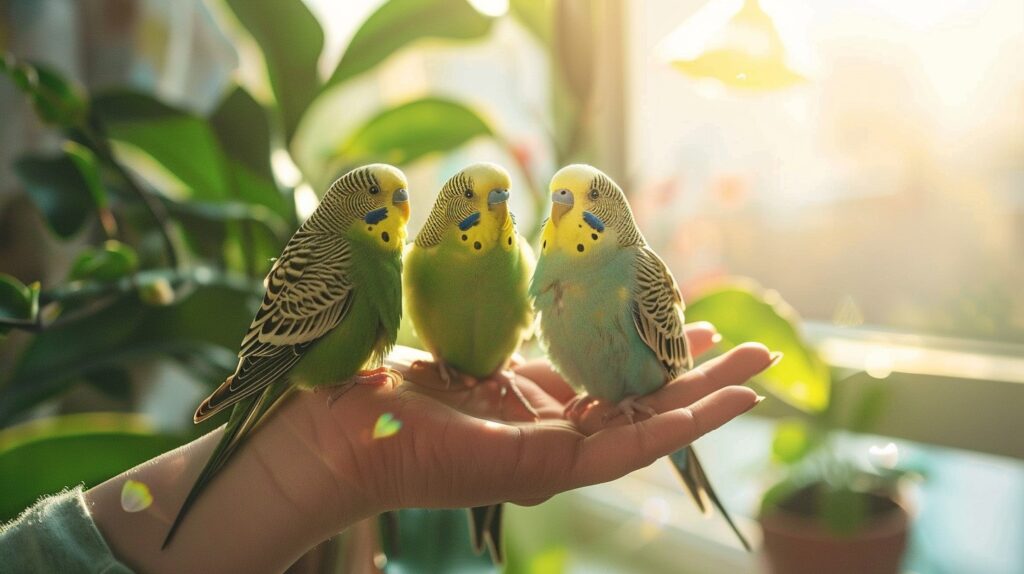
Genetic Considerations
The turquoise mutation in green cheek conures comes with genetic implications:
- Turquoise is a recessive trait requiring specific breeding protocols
- Improper breeding can lead to weakened genetics over generations
- Some color mutations are associated with higher rates of certain health issues
- Inbreeding to maintain color traits can increase vulnerability to disease
- Visual mutations may mask underlying health conditions
The turquoise green cheek conure’s striking coloration is the result of selective breeding, which can sometimes prioritize appearance over health if not done responsibly. Understanding the genetic background of your bird can help you anticipate potential health concerns.
Responsible Ownership
Whether or not you plan to breed your turquoise green cheek conure:
- Research the breeder’s practices before purchasing
- Understand the genetic background of your bird
- Discourage breeding behaviors in pet birds not intended for breeding
- Provide environmental modifications during hormonal periods
- Consult with avian veterinarians specialized in reproductive health
- Consider the ethical implications of breeding
- Recognize that responsible breeding requires significant expertise
The turquoise green cheek conure requires specialized knowledge for proper breeding. For most owners, focusing on providing the best possible pet care rather than breeding is the most responsible choice.
For female turquoise green cheek conures not intended for breeding, managing hormonal cycles is important to prevent egg-laying complications. Adjustments to diet, light exposure, and environmental factors can help reduce hormonal behaviors and associated health risks.
Comprehensive Care Guidelines for Your Turquoise Green Cheek Conure
Beyond understanding the potential dangers, providing excellent care for your turquoise green cheek conure requires attention to several key areas. These guidelines will help ensure your bird remains healthy, happy, and well-adjusted throughout its life.
Proper Housing Requirements
The turquoise green cheek conure needs appropriate housing for optimal health:
- Minimum cage size: 24″ L x 24″ W x 36″ H (larger is always better)
- Bar spacing no more than 1/2″ to 3/4″ to prevent escape
- Multiple perches of varying diameters and materials
- Strategically placed food and water containers to prevent contamination
- Toys positioned at different heights to encourage movement
- Safe materials that can withstand chewing
- Cage positioned away from drafts, direct sunlight, and kitchen areas
The turquoise green cheek conure is active and needs space to climb, play, and flap its wings. A cage that’s too small can lead to physical and psychological problems over time.
Socialization and Training
The turquoise green cheek conure is highly social and benefits from proper training:
- Start handling from a young age (if possible)
- Use positive reinforcement techniques only
- Train basic commands like “step up” and “step down”
- Socialize with different family members to prevent one-person bonding
- Introduce new experiences gradually to build confidence
- Consider clicker training for advanced behaviors
- Never punish your bird, as this damages trust
The turquoise green cheek conure’s intelligence makes it highly trainable, but also sensitive to negative experiences. Consistent, gentle training builds trust and creates a strong bond between bird and owner.
Environmental Enrichment
Creating an engaging environment for your turquoise green cheek conure:
- Provide a variety of toys that encourage different behaviors (chewing, foraging, puzzle-solving)
- Rotate toys regularly to maintain interest
- Create foraging opportunities that mimic natural behavior
- Offer different textures and materials for exploration
- Consider a play gym separate from the cage for supervised out-of-cage time
- Provide natural branches (properly sanitized) for climbing and chewing
- Incorporate training sessions into daily routine for mental stimulation
The turquoise green cheek conure’s natural behaviors include foraging, climbing, chewing, and social interaction. Your bird’s environment should allow for all these activities to prevent boredom and frustration.
Finding a Qualified Veterinarian
Locating appropriate medical care for your turquoise green cheek conure:
- Research avian veterinarians before acquiring your bird
- Verify the vet has specific experience with conures
- Schedule a wellness exam within the first week of bringing your bird home
- Establish baseline health parameters when your bird is healthy
- Discuss proper diet, supplements, and preventative care
- Create an emergency plan for after-hours veterinary needs
- Consider pet insurance that covers exotic birds
The turquoise green cheek conure requires specialized veterinary knowledge. Not all veterinarians are experienced with birds, and even fewer have specific expertise with conures and their unique health needs.
The Joys of Turquoise Green Cheek Conure Ownership
Despite the challenges and responsibilities, owning a turquoise green cheek conure brings tremendous rewards. These charming birds offer companionship, entertainment, and affection to those willing to meet their needs. The turquoise green cheek conure personality is renowned for being playful, affectionate, and engaging.
Unique Traits of the Turquoise Mutation
The turquoise green cheek conure differs from other mutations in several ways:
- The distinctive blue-green (turquoise) body coloration
- Subtle differences in behavior reported by some owners
- Increasing popularity making them more available than in the past
- Price point typically higher than standard green cheek conures
- Growing community of dedicated turquoise conure enthusiasts
While the turquoise green cheek conure shares most characteristics with other green cheek varieties, its stunning coloration makes it particularly sought after by bird enthusiasts.
Building a Lifelong Bond
Creating a strong relationship with your turquoise green cheek conure:
- Spend consistent time together daily
- Respect your bird’s boundaries and personality
- Learn to read subtle body language cues
- Incorporate training into play sessions
- Create positive associations through rewards and affection
- Be patient through different life stages and behavioral changes
- Commit to the full lifespan of your bird (20+ years)
The turquoise green cheek conure forms deep bonds with its owners, often becoming a cherished family member. The relationship requires time, patience, and understanding, but the rewards are immeasurable.
Conclusion
Owning a turquoise green cheek conure is a significant commitment that comes with both challenges and rewards. By understanding and preparing for the five hidden dangers discussed in this article—household toxins, nutritional deficiencies, inadequate mental stimulation, unrecognized health issues, and breeding complications—you can provide a safer, healthier environment for your feathered companion.
The turquoise green cheek conure is an extraordinary pet that brings joy, companionship, and entertainment to those willing to meet its needs. With proper care, your turquoise conure can live a long, healthy life of 20-25 years, becoming a cherished member of your family. The striking appearance of the turquoise green cheek conure may initially attract owners, but it’s their charming personality and intelligent nature that create lasting bonds.
Remember that responsible turquoise green cheek conure ownership requires ongoing education, dedication, and adaptation to your bird’s changing needs throughout its life. By staying informed and attentive, you can enjoy all the benefits of sharing your life with these remarkable birds while minimizing the risks.
For more information about exotic pet care and bird ownership, visit PetsPump.com for additional resources, guides, and community support.
FAQs About Turquoise Green Cheek Conures
Q: How much does a turquoise green cheek conure typically cost?
A: The turquoise green cheek conure price typically ranges from $350 to $600 depending on the bird’s age, quality, and the breeder’s reputation. This is generally higher than the standard green cheek conure, which usually costs $250-400.
Q: Can turquoise green cheek conures talk?
A: While turquoise green cheek conure talking ability is limited compared to larger parrots, some can learn to mimic words and simple phrases. They’re better known for their whistles, clicks, and chirps than for speech capabilities.
Q: How long do turquoise green cheek conures live?
A: With proper care, the turquoise green cheek conure lifespan ranges from 20-25 years in captivity. Some have been known to live even longer with exceptional care.
Q: Are turquoise green cheek conures loud?
A: The turquoise green cheek conure noise level is relatively moderate compared to other parrot species. They do vocalize throughout the day but are generally quieter than many larger parrots, making them better suited for apartment living.
Q: How do I find a reputable turquoise green cheek conure breeder?
A: Look for breeders who prioritize health over appearance, allow you to visit their facility, provide health guarantees, and show genuine interest in where their birds are going. Ask for references from previous customers and check for membership in avian organizations.
Q: How can I tell if my turquoise green cheek conure is male or female?
A: Unlike some bird species, turquoise green cheek conures show no obvious sexual dimorphism. Definitive gender determination requires DNA testing through a blood sample or feather analysis.
Q: What size cage does a turquoise green cheek conure need?
A: The minimum turquoise green cheek conure cage size should be 24″ L x 24″ W x 36″ H, but larger is always better. Bar spacing should be no more than 1/2″ to 3/4″ to prevent escape.
Q: How intelligent are turquoise green cheek conures?
A: Turquoise green cheek conure intelligence is quite high. They can learn tricks, solve simple puzzles, recognize people, and adapt to routines. Their intelligence level makes them engaging pets but also means they require mental stimulation to prevent boredom.
Q: Are turquoise green cheek conures good for first-time bird owners?
A: With proper research and commitment, turquoise green cheek conures can be suitable for first-time bird owners. Their manageable size, moderate noise level, and affectionate nature make them easier to care for than larger parrots, but they still require significant time, attention, and specialized care.
Q: How does the turquoise mutation differ from other green cheek conure varieties?
A: The turquoise green cheek conure displays blue-green (turquoise) body feathers instead of the typical green coloration. The mutation affects the distribution of psittacin (yellow pigment) in the feathers, resulting in the distinctive coloration that sets it apart from standard green cheek conures and other mutations like the pineapple or yellow-sided varieties.
References and Additional Resources
- American Federation of Aviculture. (2023). Conure Care Guidelines. https://www.afabirds.org/
- Association of Avian Veterinarians. (2024). Nutritional Guidelines for Companion Birds. https://www.aav.org/
- Johnson, M. (2023). Understanding Psittacine Behavior: A Guide for Pet Owners. Journal of Companion Animal Psychology, 45(3), 78-92.
- Martinez, C. (2024). Mutation Genetics in Captive Pyrrhura Conures. Avian Conservation Quarterly, 18(2), 112-129.
- Williams, E. (2023). Avian Enrichment: Creating Mentally Stimulating Environments for Pet Birds. Companion Bird Journal, 32(4), 45-58.
- World Parrot Trust. (2024). Conure Conservation and Welfare Guidelines. https://www.parrots.org/
For more information about proper bird care and other pet topics, visit PetsPump.com for our comprehensive guides on bird nutrition, housing, behavior, and health.
Disclaimer: This article is intended for informational purposes only and does not substitute for professional veterinary advice. Always consult with a qualified avian veterinarian regarding the health and care of your turquoise green cheek conure.



